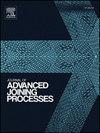Disclosing connection links between microstructure and mechanical performance in pulsating current gas tungsten arc welding of Hastelloy B-2 superalloy
Abstract
In this study, welding a Ni-Mo-based superalloy (Hastelloy B-2) was examined in order to characterize the microstructure and mechanical performance of joints along with assessing the effects of current intensity on the microstructure and mechanical responses of different weld zones. The gas tungsten arc welding (GTAW) process was used to weld the samples using ERNiCrMo-2 filler metal. The pulsed current GTAW process was used to weld the superalloy sheets of thickness of 1 mm with background current (Ib) of 20 A and 40 A and peak current (Ip) of 80 A and 60 A. Tensile and Vickers microhardness tests were conducted to evaluate the effect of pulsed current on mechanical properties of the welds along with chemistry and microstructure characterizations. Finally, the fracture surfaces after the tensile test were studied using SEM fractography analysis. The results indicated that increasing Ib and decreasing Ip led to low heat input and high cooling rate resulting in a high thermal gradient. This caused microstructure transition from the columnar dendrites to the coaxial ones in the weld zone; molten metal convection in the fusion zone led to fine grains in the weld zone during welding time. Moreover, a significant decrease in the amount of molybdenum carbides at the interdendritic regions of the weld metal was observed under these conditions. The tensile strength of the weld metal was higher than that of the base metal resulting in the fracture of all welds from the base metal. Additionally, the microhardness results indicated a significant increase for the weld metal compared to both heat-affected zone (HAZ) and base metal. The higher mechanical properties of the weld metal is attributed to the increase in background current and decrease in peak current leading to a fine grain microstructure. Fractography following the tensile test showed a completely ductile fracture.

 求助内容:
求助内容: 应助结果提醒方式:
应助结果提醒方式:


